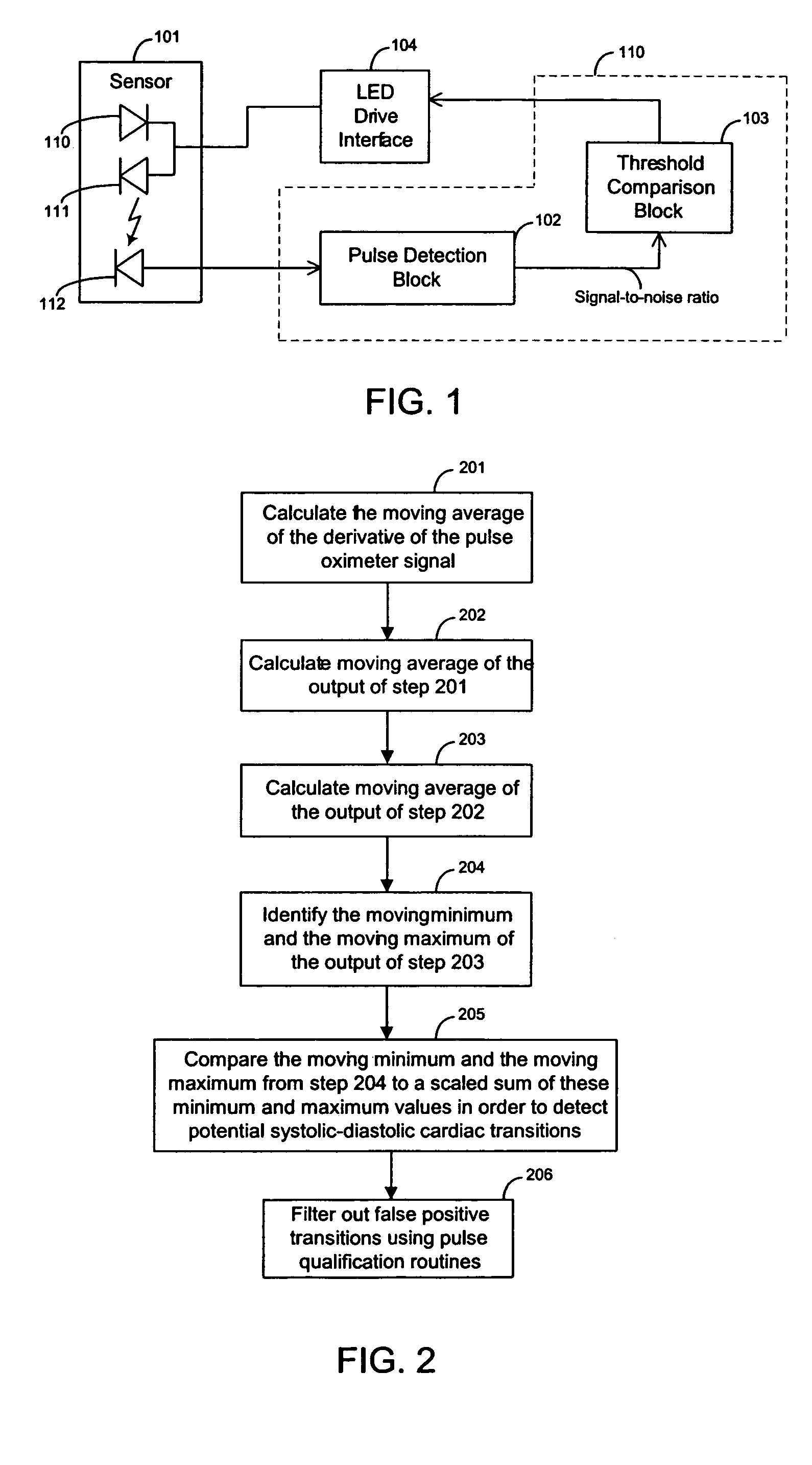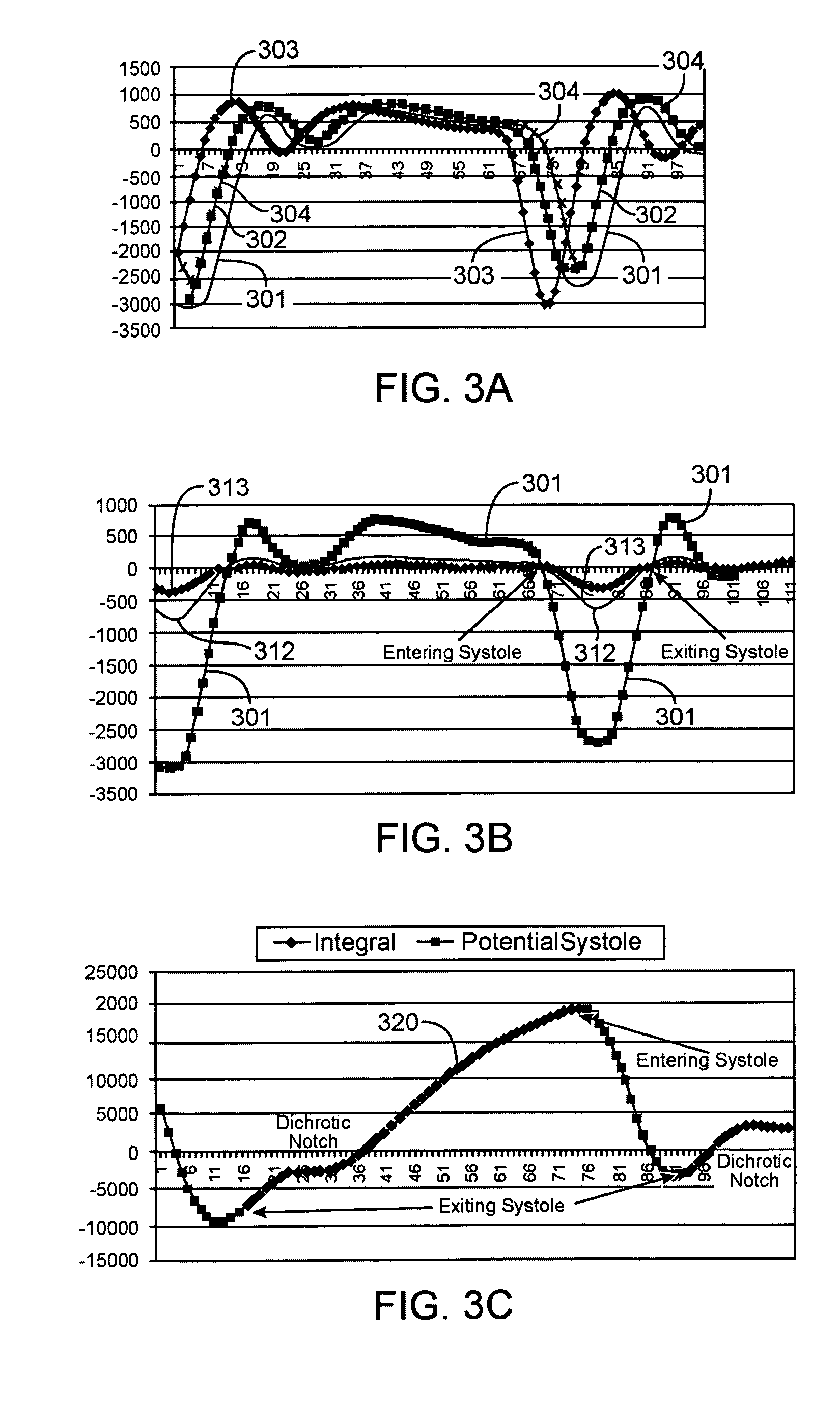Techniques for detecting heart pulses and reducing power consumption in sensors
a technology of heart pulse and oximeter, which is applied in the field of detecting heart pulse and reducing power consumption in sensors and oximeter systems, can solve the problems of system consuming an undesirably large amount of power, generating more light and consuming more power, and reducing the power consumption of the pulse oximeter, so as to maintain the signal-to-noise ratio at an adequate level for signal processing, reduce the power consumption of the sensor, and reduce the effect of power consumption
- Summary
- Abstract
- Description
- Claims
- Application Information
AI Technical Summary
Benefits of technology
Problems solved by technology
Method used
Image
Examples
Embodiment Construction
[0018]The techniques of the present invention can be used in the context of a pulse oximeter system. A pulse oximeter system receives a pulse oximeter signal from a photodetector in a pulse oximeter sensor. FIG. 1 illustrates a block diagram of pulse oximeter system according to an embodiment of the present invention. The pulse oximeter system includes an oximeter sensor 101.
[0019]An oximeter sensor of the present invention can utilize any suitable number of light emitting elements. For example, a sensor of the present invention can have 1, 2, 3, or 4 light emitting elements. In the example of FIG. 1, sensor 101 has two LEDs 110 and 111 that emit two different wavelengths of light.
[0020]Sensor 101 also includes photodetector 112 that senses light from LEDs 110 and 111 after the light has passed through the patient's tissue. The pulse oximeter system also includes feedback loop circuitry 110 and LED drive interface 104. Feedback loop circuitry 110 includes pulse detection block 102 a...
PUM
 Login to View More
Login to View More Abstract
Description
Claims
Application Information
 Login to View More
Login to View More - R&D
- Intellectual Property
- Life Sciences
- Materials
- Tech Scout
- Unparalleled Data Quality
- Higher Quality Content
- 60% Fewer Hallucinations
Browse by: Latest US Patents, China's latest patents, Technical Efficacy Thesaurus, Application Domain, Technology Topic, Popular Technical Reports.
© 2025 PatSnap. All rights reserved.Legal|Privacy policy|Modern Slavery Act Transparency Statement|Sitemap|About US| Contact US: help@patsnap.com



